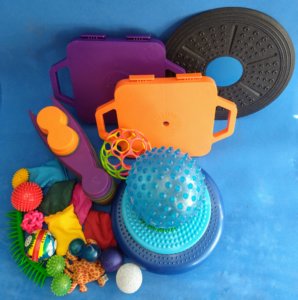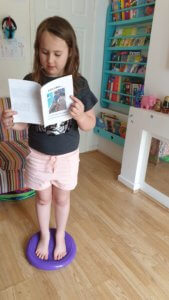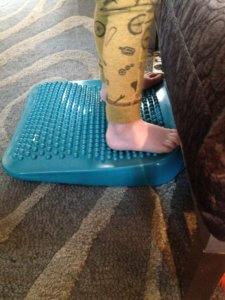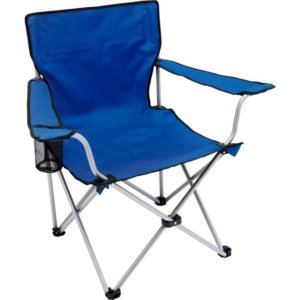7 Fidget Fixers for Wriggly Bodies
Sitting still for extended periods of time can be really challenging for children with ADHD. Their minds and bodies are happier when then are in motion, and while it doesn’t look like it, fidgeting can actually improve their attention and focus.
While movement helps our ADHD child, there are times throughout the day when they will need to sit still, where their fidgeting can be distracting to others or even dangerous.
For these occasions – when our child is at school, or in the car, or during mealtimes – it can be helpful to use a “fidget fixer” to help channel their need for movement.
Below we share 7 of our favourite fidget fixers for wriggly bodies. Some of the equipment we mention is available to hire through our lending library, if you want to try it out with your child.

Fidget Fixers For Legs and Feet
Teach your child to wriggle forward in their chair and wrap their feet around the chair legs if they need to move. They can then push through their legs against the resistance of the chair leg. The physical motion also tends to help them sit up taller from their lower back, aiding their posture.
Tie a resistance band around the front chair legs, so that your child can push down against this with their feet or push forwards with their legs.
There are some commercially available items you could purchase or borrow from the Gympanzees Lending Library:
Bilibo – a curved shell which will wobble under the table when feet are paced in it or alternatively could be upturned as a foot stool.

Wobble cushion or small inflatable camping pillow- semi inflated, these allow feet to move about in a contained way. A wobble cushion for the feet might be helpful for long car journeys.
Place a wobble cushion inside a Bilibo for added wobble and movement!
Fidget Fixers For The Bottom
 Wobble cushions come in various shapes and sizes. A round cushion can be used to sit or stand on. When inflated firmly they can be very unstable and very challenging to keep balance on. If your child has postural difficulties or is prone to slumping at the table, consider whether making the task too demanding for them will be helpful for their attention and ability to do other things at the same time which as eating or writing. Wobble cushions are easier to sit on when inflated to a mid-point: our child can still gain the postural benefits and wriggle a bit without risk of being tipped off!
Wobble cushions come in various shapes and sizes. A round cushion can be used to sit or stand on. When inflated firmly they can be very unstable and very challenging to keep balance on. If your child has postural difficulties or is prone to slumping at the table, consider whether making the task too demanding for them will be helpful for their attention and ability to do other things at the same time which as eating or writing. Wobble cushions are easier to sit on when inflated to a mid-point: our child can still gain the postural benefits and wriggle a bit without risk of being tipped off!
 These are angled cushions designed to help with both fidgeting and promoting an upright sitting posture. Again, when inflated they can be challenging to sit on and semi-inflated usually works best.
These are angled cushions designed to help with both fidgeting and promoting an upright sitting posture. Again, when inflated they can be challenging to sit on and semi-inflated usually works best.
 Camping/ festival seats are small folding supports that are relatively inexpensive. The adjustable side straps help tension the seat to support the lower back and provide additional proprioceptive input for those who struggle to sit still or sit up for extended periods of time.
Camping/ festival seats are small folding supports that are relatively inexpensive. The adjustable side straps help tension the seat to support the lower back and provide additional proprioceptive input for those who struggle to sit still or sit up for extended periods of time.
The R82 Scallop seat is a similar, more specialised seat insert available in different sizes.
Fidget Fixers for Sitting Upright
Having a cushion behind them will help a child who is perching on a chair that is too deep for their upper leg length.
Alternatively, children who tend to slump across the table or rock in their seat may like a cushion placed between their tummy and the table.
You can also use a large soft toy or a rucksack in place of a cushion.






